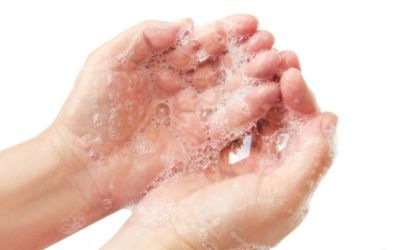Old-Fashioned Weapons Against MRSA May Be Best

Thorough handwashing may be the most cost-effective way to reduce the spread of MRSA in the emergency department and everywhere else. For patients who already have a MRSA infection, incision and drainage is a more effective treatment than ultrasound-guided needle aspiration, according to a new randomized, controlled trial. The results of both studies are published online today in Annals of Emergency Medicine ("Prevalence and Predictors of Nasal and Extranasal Staphylococcal Colonization in Patients Presenting to the Emergency Department" and "A Randomized, Controlled Trial of Incision and Drainage Versus Ultrasound-Guided Needle Aspiration for Skin Abscesses and the Effect of MRSA")
"MRSA is transmitted by touch, making clean hands essential to stopping the spread of this potentially deadly organism," says Kalpana Gupta, MD, of the Boston Veterans Affairs Health Care System in Boston. "Ours is one of the first studies to test patients in the ER for MRSA regardless of their reason for being there. While the percentage of patients who tested positive for MRSA was small (only 5 percent), more than half of them carried MRSA in multiple sites on their bodies. It would be very costly to make testing of all emergency patients for MRSA standard practice, but very inexpensive to institute enhanced handwashing precautions."
Researchers screened 400 adult patients across sex and all socio-economic and racial lines. They took swabs from multiple sites on the body. Of those patients who tested positive for MRSA, 80 percent carried the organism somewhere other than the nose, such as the palms of the hand or the groin.
Patients who tested positive for MRSA were more likely to have diabetes, be HIV positive, live in a nursing home or long-term care facility, have a recent hospitalization, have a recent incarceration in jail or play contact sports. However, 20 percent of the MRSA-positive subjects were otherwise healthy and had no known risk factors. Testing positive for MRSA does not necessarily mean that a patient has an active MRSA infection.
In a related paper, researchers tested ultrasound-guided needle aspiration against the standard practice of incision and drainage of skin abscesses, and found an overall success rate of 26 percent for the needle aspiration method versus 80 percent for the incision and drainage method. For patients with abscesses infected with MRSA, neither method was very successful: the needle aspiration method was successful in only 8 percent of patients, and incision and drainage was successful in 61 percent of patients.
"We thought a less invasive method of treating abscesses would be preferable for both emergency physicians and patients," says lead study author Romolo Gaspari, MD, PhD, of the Department of Emergency Medicine at the University of Massachusetts in Worcester, Mass. "Even though it is more painful, we found instead that incision and drainage was required. Neither method was especially effective for treating MRSA-positive abscesses, but the failure rate for needle aspiration was unacceptably high, despite ultrasound guidance."
The Guardians of Animal Health: Who Are Veterinary Infection Preventionists?
March 21st 2025Veterinary infection control experts Leslie Kollmann, BS, AAS, CVT, CIC, Denise Waiting, LVT, and Leslie Landis, LVT, BS, discuss challenges, zoonotic disease risks, and the importance of education, collaboration, and resource development in animal care facilities.
The Latest on CLABSIs and CAUTIs: Evidence-Based Approaches for Infection Prevention
February 27th 2025Health care–associated infections like CLABSIs and CAUTIs threaten patient safety. Learn evidence-based strategies, new technologies, and prevention protocols to reduce these infections and improve outcomes.
Resilience and Innovation: The Pivotal Contributions of Black Americans to Health Care and Medicine
February 24th 2025During Black History Month, we honor the resilience and contributions of Black medical professionals in health care. Despite barriers, they have led transformative changes, advocating for equitable access and medical excellence. Recognizing their impact ensures a more inclusive health care future for all.
Glove Usage Guideline: From The Joint Commission, CDC, and World Health Organization
February 17th 2025Proper glove use is crucial in health care settings to prevent infections. Guidelines from TJC, CDC, and WHO stress correct selection, usage, and disposal to minimize health care–associated infections (HAIs) and cross-contamination risks. Infection preventionists (IPs) play a key role in educating staff, enforcing compliance, and improving patient safety through standardized glove practices.